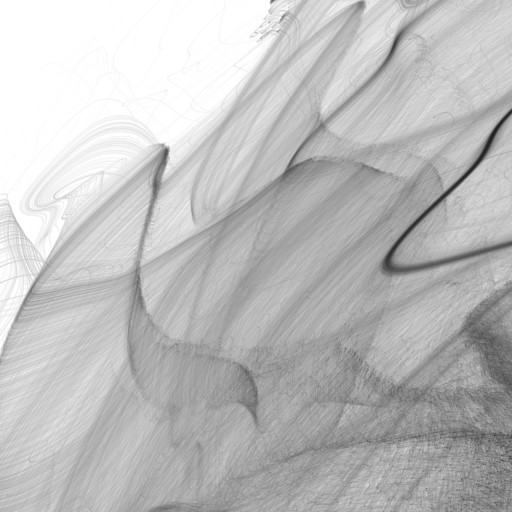Mark Stock
“Mesh #3 Iso”
Digital archival print, 20" x 20" (frame) 12" x 12" (print), 2000.
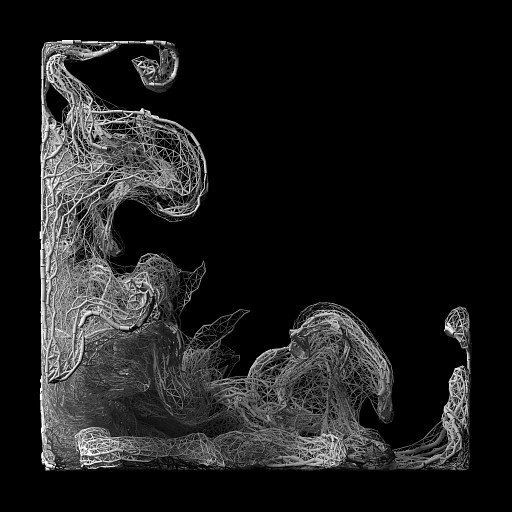
Mesh #3 Iso illustrates a frame from the evolution of an initially-tetrahedral
(non-physical) vortex sheet using a triangulated vortex method developed as
part of the artist's dissertation research. Circulation is attached to the edges
of the triangles, and triangles are split and merged to accommodate stretching
and folding of the sheet. The ill-posedness of vortex sheet dynamics is suppressed
in this simulation via regularization of the Biot-Savart kernel. The parallel
projection and realistic rendering add two more layers to the real and unreal
natures of the image.
Detail
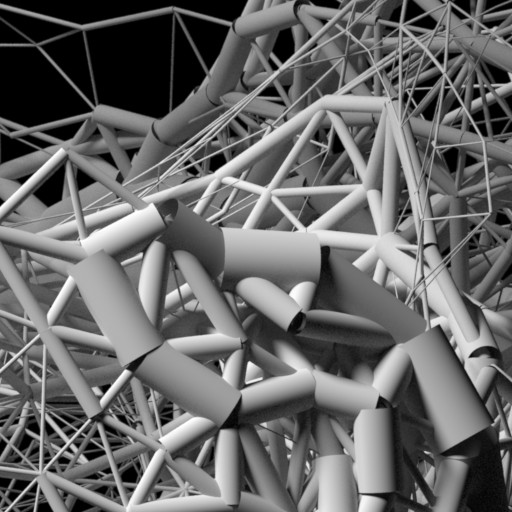
Mark Stock, Research Scientist, Applied Scientific Research, Inc.
"All of my work depicts imaginary scenes that derive their complexity from the
deceptively simple behavior of large numbers of independent actors/agents/particles/elements.
The rules governing the action of each element are often based on primary natural
and physical forces and can be described in a single mathematical statement
or a few lines of code. Alone, each element emits a trivial and boring solution,
like a single star floating motionless in space. Together, though, these elements
create massively-complex galaxies of shapes and forms inspired by, and reflecting,
the natural origin of their rules. This is the way of computational science:
to break complex, real problems up into many smaller and easily solvable problems
such that the ensemble predicts the behavior of the real system. That was my
education, and is now my creative inspiration."
mstock@umich.edu
http://mark.technolope.org/
Other works by the artist
“Green Streamlines”
Digital archival print, 20" x 20" (frame) 12" x 12" (print), 2006.
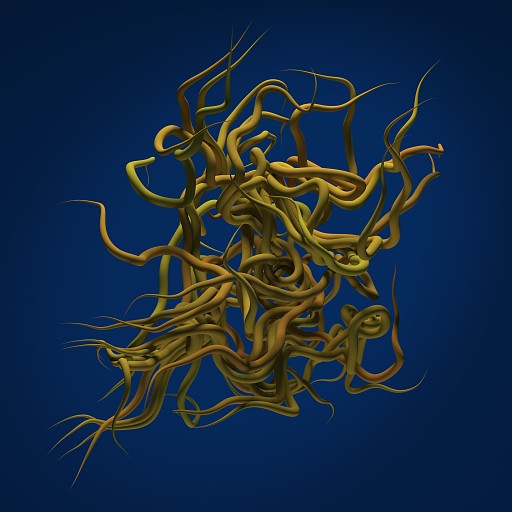
Green Streamlines depicts individual traces through a vector potential field.
The field is populated with random thick-cored vortex particles, and each path
is created by integrating the Biot-Savart equation in both directions from an
initially-random point. Barnes and Hut's multipole treecode algorithm is used
to accelerate the calculations. My goal for this image was to allow appreciation
of ubiquitous fluid forms by instantiating a small tangle of turbulence.
Detail
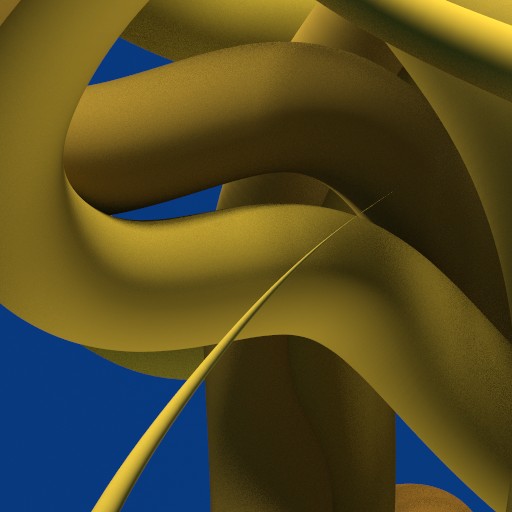
“Untitled #92”
Digital archival print, 20" x 20" (frame) 12" x 12" (print), 2007.
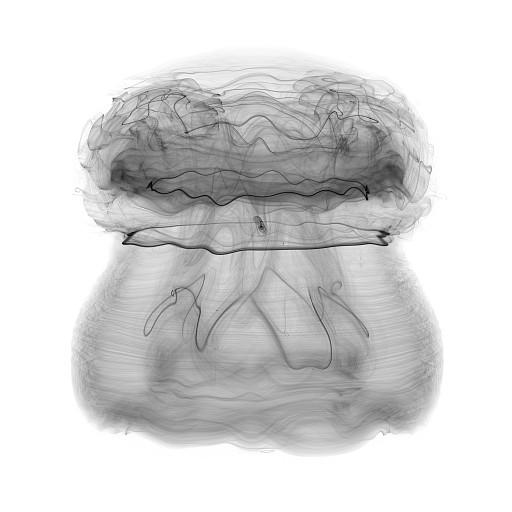
This sketch consists of thousands of lines drawn through a three-dimensional
vector field. The data represents the vorticity at an intermediate stage of
a simulation of vortex sheet motion at high Reynolds number. The initial strength
of the spherical vortex sheet was set using potential flow theory such that
the interior of the fluid volume had a uniform upward velocity. This is a common
simulation in the study of three-dimensional vortex methods. A small random
perturbation in every step of the space curve integration assists in finding
stable "orbits" in the field, which show up as dark bands.
Detail
